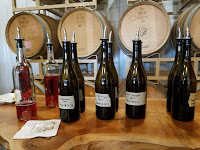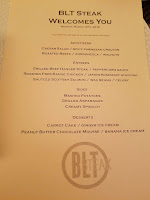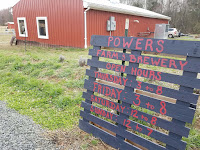
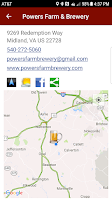 While navigating this detour look for Powers Farm & Brewery in Midland, a very unique craft brewery. As it's name suggests, Powers is a working farm and not just hops, just look at their Produce CSA. As for their field beers they use on-farm ingredients such as hops, herbs, fruits, vegetables, plus foraged bark and berries. Each of these non-standard ingredients add different characters to the beer but never overwhelm the base flavor. For instance The Saxon Schwarzbier is brewed with farm grown chicory which enhances the dark malt flavors with adds even more roastiness. The Birch Brown Ale includes black birch tree trimmings that are added three separate times during the brewing process. This adds a little spice up front that balances the slightly sweet malty tail. Two other original and unique recipes are The Pollinator Irish Red Ale and The Heirloom Belgium Dark Ale. The former is brewed using seven different malts plus native Virginia Hawthorne berries which provide a sour cherry character to to the mixture. And the dark ale is brewed with farm grown dried heirloom tomatoes melding peppers and sweetness to the dark and yeasty character. Finally, the Hibiscus Blonde Ale provides slightly tart and floral attributes to create a very refreshing beer. Now you can understand why Powers Farm & Brewery is a highly recommended detour off Route 15.
While navigating this detour look for Powers Farm & Brewery in Midland, a very unique craft brewery. As it's name suggests, Powers is a working farm and not just hops, just look at their Produce CSA. As for their field beers they use on-farm ingredients such as hops, herbs, fruits, vegetables, plus foraged bark and berries. Each of these non-standard ingredients add different characters to the beer but never overwhelm the base flavor. For instance The Saxon Schwarzbier is brewed with farm grown chicory which enhances the dark malt flavors with adds even more roastiness. The Birch Brown Ale includes black birch tree trimmings that are added three separate times during the brewing process. This adds a little spice up front that balances the slightly sweet malty tail. Two other original and unique recipes are The Pollinator Irish Red Ale and The Heirloom Belgium Dark Ale. The former is brewed using seven different malts plus native Virginia Hawthorne berries which provide a sour cherry character to to the mixture. And the dark ale is brewed with farm grown dried heirloom tomatoes melding peppers and sweetness to the dark and yeasty character. Finally, the Hibiscus Blonde Ale provides slightly tart and floral attributes to create a very refreshing beer. Now you can understand why Powers Farm & Brewery is a highly recommended detour off Route 15. 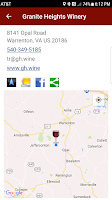
 Not too far away lies another farm, the 200 acre farm land of Granite Heights Winery in which Luke and Toni Kilyk purchased in 1997. With the assistance of Lucie Morton they planted vines in order to leverage Luke's undergraduate degree in chemistry and home wine making experience. The first wines using all estate grapes were released in 2010 and since then the winery has become well known for their Petit Manseng and Lomax Reserve Bordeaux blend. I was able to taste verticals of these wines during a recent vitiCULTURE trade tasting. Petit Manseng is generally produced in a dry or off-dry style and the Kilyk's let the harvest dictate the style of each vintage. In 2015 the grapes were harvested a little early and the wine vinified dry. This 2015 Petit Manseng ($22) is light and fresh, tart, with a tropical - pineapple character. The following year's 2016 Petit Manseng ($19) was made off-dry and weighs in at 4% residual sugar. However, the wine comes across much drier as a result of the grape's abundant inherent acidity; it also shows less aroma and the flavor is more orange-citrus than tropical. Two completely different wines and I preferred the dry 2015 version.
Not too far away lies another farm, the 200 acre farm land of Granite Heights Winery in which Luke and Toni Kilyk purchased in 1997. With the assistance of Lucie Morton they planted vines in order to leverage Luke's undergraduate degree in chemistry and home wine making experience. The first wines using all estate grapes were released in 2010 and since then the winery has become well known for their Petit Manseng and Lomax Reserve Bordeaux blend. I was able to taste verticals of these wines during a recent vitiCULTURE trade tasting. Petit Manseng is generally produced in a dry or off-dry style and the Kilyk's let the harvest dictate the style of each vintage. In 2015 the grapes were harvested a little early and the wine vinified dry. This 2015 Petit Manseng ($22) is light and fresh, tart, with a tropical - pineapple character. The following year's 2016 Petit Manseng ($19) was made off-dry and weighs in at 4% residual sugar. However, the wine comes across much drier as a result of the grape's abundant inherent acidity; it also shows less aroma and the flavor is more orange-citrus than tropical. Two completely different wines and I preferred the dry 2015 version. The Lomax Reserve wines are only produced in exceptional years and since the winery stresses quality over cash flow, the Kilyk's will age a vintage in the bottle until the wine is ready for release. In this regard the 2013 Lomax Reserve was released before the 2012 vintage. A wise decision as the '12 joined the '10 as Governor's Cup Case Club wines. During our tasting we sampled all three of these years starting with the 2013 Lomax Reserve ($24) a blend of 55% Merlot and 45% Cabernet Sauvignon aged 20 months in American oak. This wine has a solid mid-palate with a soft finish. The 2012 Lomax Reserve ($35) is the winery's current release and is a blend of 59% Cabernet Sauvignon, 27% Merlot, 8% Cabernet Franc, and 6% Petit Verdot aged 20 months in various oak casks. It is a delicious wine with bright cherries, texture, integrated tannins, and a long soft landing. Well done. Finally, the Governor's Cup Case Club 2010 Lomax Reserve ($59) is a blend of 75% Cabernet Sauvignon, 22% Merlot, and 3% Cabernet Franc aged 15 months in mostly American oak. This is still a big wine, much more tannins so swirl away. There's a big smokey aroma, spices and dark fruit, and finishing chewy and mouth drying tannins.
The Lomax Reserve wines are only produced in exceptional years and since the winery stresses quality over cash flow, the Kilyk's will age a vintage in the bottle until the wine is ready for release. In this regard the 2013 Lomax Reserve was released before the 2012 vintage. A wise decision as the '12 joined the '10 as Governor's Cup Case Club wines. During our tasting we sampled all three of these years starting with the 2013 Lomax Reserve ($24) a blend of 55% Merlot and 45% Cabernet Sauvignon aged 20 months in American oak. This wine has a solid mid-palate with a soft finish. The 2012 Lomax Reserve ($35) is the winery's current release and is a blend of 59% Cabernet Sauvignon, 27% Merlot, 8% Cabernet Franc, and 6% Petit Verdot aged 20 months in various oak casks. It is a delicious wine with bright cherries, texture, integrated tannins, and a long soft landing. Well done. Finally, the Governor's Cup Case Club 2010 Lomax Reserve ($59) is a blend of 75% Cabernet Sauvignon, 22% Merlot, and 3% Cabernet Franc aged 15 months in mostly American oak. This is still a big wine, much more tannins so swirl away. There's a big smokey aroma, spices and dark fruit, and finishing chewy and mouth drying tannins.There are other wineries and breweries in the Warrenton area and we will return to these using theCompass Craft Beverage Finder in the coming months. Cheers.





